Events
| Name | organizer | Where |
|---|---|---|
| MBCC “Doing Business with Mongolia seminar and Christmas Receptiom” Dec 10. 2025 London UK | MBCCI | London UK Goodman LLC |
NEWS
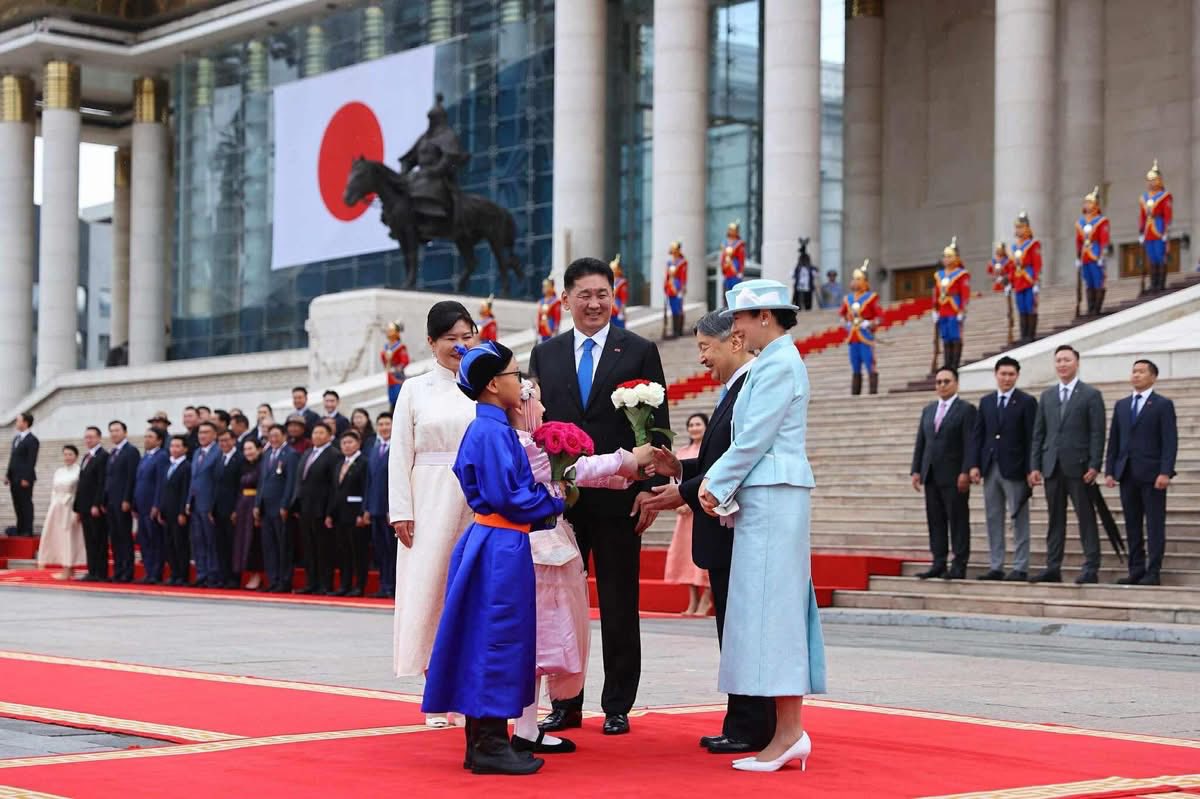
Japanese imperial couple attend welcome ceremony in Mongolia www.english.kyodonews.net
Japan's Emperor Naruhito and Empress Masako attended a welcome reception in the Mongolian capital on Tuesday in the first state visit to the country by a Japanese emperor.Virtual tours of Japan
The couple's eight-day trip through July 13 is meant to reaffirm the friendship between the two nations, with this year marking the 80th anniversary of the end of World War II.
After meeting President Ukhnaa Khurelsukh and his wife at the government building in Ulaanbaatar, the emperor and the empress are expected to participate in a banquet hosted by the Mongolian leader later in the day.
The two are also scheduled to lay flowers at a memorial to commemorate Japanese nationals who died while in internment camps there after the war.Virtual tours of Japan
After arriving in Mongolia on Sunday, the emperor visited the Chinggis Khaan National Museum and a water facility built with Japanese aid before attending the official events.
Following World War II, the Soviet military transferred around 14,000 of some 575,000 Japanese prisoners of war from Siberia to Mongolia, putting them to work on infrastructure projects for around two years. More than 1,700 are believed to have died.Virtual tours of Japan
The Japanese government later established a memorial on a hill in Dambadarjaa, a former cemetery for the deceased POWs on the outskirts of Ulaanbaatar.
Mongolia, sandwiched between China and Russia, established diplomatic relations with Japan in 1972. The two countries have enjoyed a close relationship since Mongolia embarked on democratization and economic liberalization in 1990.
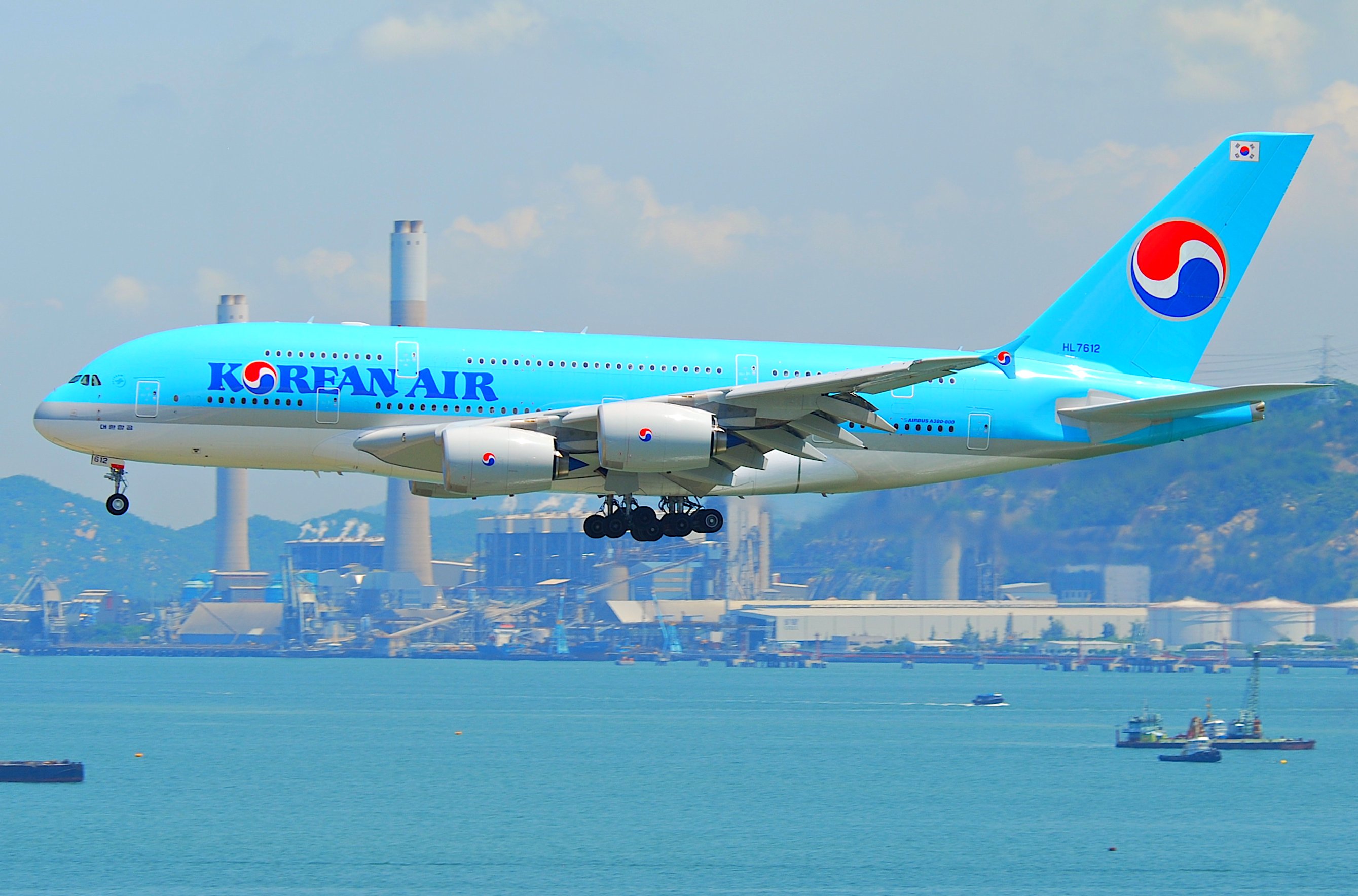
CU Mongolia expands logistics hub toward 1,000-store goal www.koreaherald.com
CU Mongolia, operated by South Korea’s leading convenience store brand BGF Retail, said Tuesday that it has expanded its automated logistics center to enhance its supply capacity across the country.
The center, located about two hours east of the capital city, Ulaanbaatar, initially introduced automation technologies in 2023, becoming the first in Mongolia’s retail industry to adopt automation systems.
The expansion adds around 3,300 square meters to the existing 4,960-square-meter facility, increasing the total size to more than 8,200 square meters.
It also enhances logistics capabilities with a digital picking system, allowing the center to process up to 700 orders daily.
With this expansion, CU strengthens its nationwide supply chain, leaning toward its goal of opening 1,000 stores in Mongolia.
CU currently dominates the Mongolian market with approximately 490 stores, accounting for a 70 percent market share as of last month.
In addition to its logistics operations, CU Mongolia operates a ready-to-eat food production facility that opened in 2021, with plans to expand its capacity next year.
The company has also adopted an artificial intelligence-powered automated ordering system across its stores to improve demand prediction and inventory management.
“Despite Mongolia’s per capita GDP being just one-fifth of South Korea’s, CU Mongolia achieves sales on par with Korean stores, highlighting its strong position in the local market,” said Kim Tae-han, overseas business operations team manager at BGF Retail.
CU operates over 690 stores overseas, including locations in Malaysia and Kazakhstan. It has scheduled an upcoming launch in Hawaii in November.
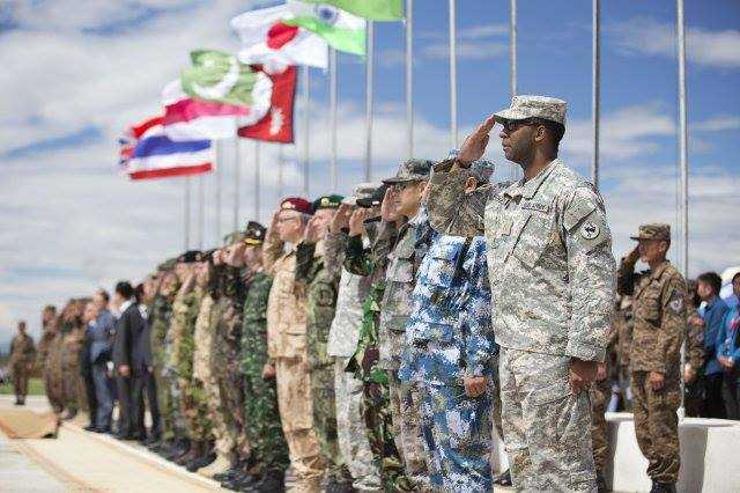
Khaan Quest demonstrates ‘strength and resolve’ of partners to seek peace www.ipdefenseforum.com
More than 1,200 defense personnel from 23 nations trained in peacekeeping operations during the 22nd iteration of Khaan Quest on the outskirts of Mongolia’s capital in June 2025.
The annual exercise at Five Hills Training Facility near Ulaanbaatar serves “as a vital platform for enhancing professional knowledge and strengthening practical skills,” Maj. Gen. Sunreviin Ganbyamba, the Mongolian Armed Forces chief of general staff, said at the opening ceremony.
Khaan Quest was launched as a bilateral initiative of the Mongolian Armed Forces and the United States Marine Corps in 2003, a decade after Mongolia shed nearly 70 years of communist rule. It has evolved into a multinational exercise featuring field training and command post drills focused on reinforcing U.N. peacekeeping standards.
“We face increasingly complex security challenges, from regional conflicts to humanitarian crises,” said Lt. Gen. Joel B. Vowell, deputy commanding general of the U.S. Army Pacific. “Khaan Quest prepares us to meet these challenges, equipping us with the skills and trust needed to operate in volatile environments. This work is about upholding the values of freedom, justice and human dignity, protecting vulnerable populations and creating conditions for lasting peace.”
The 2025 participants also included: Australia, Bhutan, Canada, China, Egypt, France, Germany, India, Italy, Japan, Kuwait, Kyrgyzstan, New Zealand, the Philippines, Qatar, South Korea, Thailand, Timor-Leste, Turkey, the United Kingdom and Vietnam.
“Over the last two decades, the Khaan Quest exercise has evolved into a highly significant and impactful multinational training event, bringing together more than 21,000 military professionals from 67 different countries,” Ganbyamba said.
About 40 Indian Army Soldiers, primarily from the Kumaon Regiment, participated in the two-week drills. The Army said it “remains steadfast in its commitment to global peace, stability and international cooperation and also continues to play an active and constructive role in advancing United Nations peacekeeping efforts around the world,” the South Asian news agency ANI reported.
Along with Vietnam People’s Army personnel, Hanoi sent senior defense officials to Mongolia during Khaan Quest for bilateral talks on peacekeeping operations and military cooperation, according to the People’s Army Newspaper.
To rehearse theater operations, the U.S. Army’s 125th Finance Battalion contracted local providers for logistics support during Khaan Quest.
“When you don’t have time or freedom of movement to resupply, being able to procure goods and services locally enables forward commanders to maintain their operational tempo and extend their operational reach,” Lt. Col. Jeremy Eckel, battalion commander, said in a news release.
U.S. Ambassador Richard Buangan highlighted the “courage and commitment” of Mongolian peacekeepers in protecting civilians from attackers in April 2025 as part of the U.N. Mission in South Sudan. “All those peacekeepers came through Khaan Quest to test their skills,” he noted at the opening ceremony.
“Every year this exercise demonstrates the strength and resolve of all the countries involved to seek peace and prosperity through friendship and trust,” Buangan said. “Khaan Quest doesn’t just build the capacity of Mongolia’s military in peacekeeping, but also that of partner countries who are investing military and security assistance to calm the world’s troubled hot spots.”
...
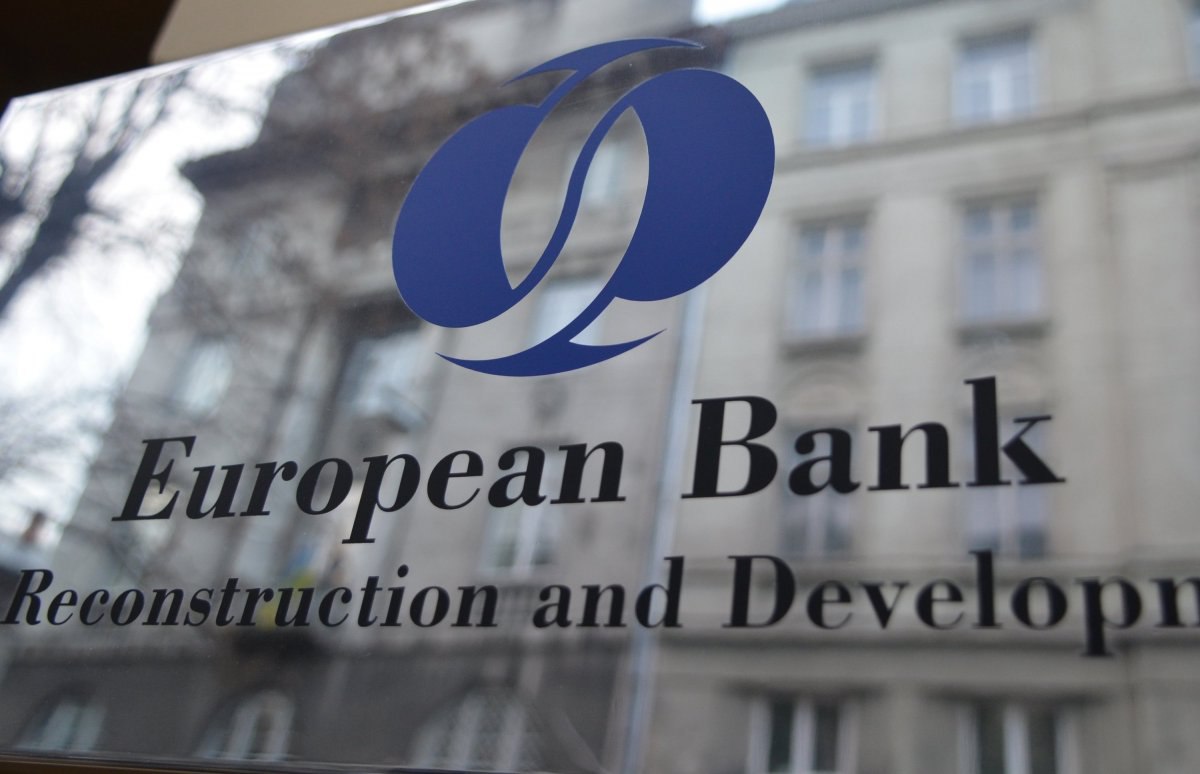
European Bank for Reconstruction and Development to Increase Investments www.montsame.mn
Deputy Prime Minister and Minister of Economy and Development Uchral Nyam-Osor met with representatives of the European Bank for Reconstruction and Development (EBRD), headed by Director for Central Asia and Mongolia Hussein Özkan, at the State Palace.
During the meeting, the parties exchanged views on expanding cooperation aligned with the Government’s priority areas. The EBRD emphasized its plan to increase investments in major projects and deepen collaboration with Mongolia.
Mr. Hussein Özkan stated, “Our bank works together to improve governance and the business environment, strengthen regional integration, and support a green and climate-resilient economy. These efforts closely align with Government policies. Moving forward, we see opportunities to expand cooperation in renewable energy, business investment, foreign trade, exports, public-private partnerships, science, technology, and innovation.”
Since 2007, the EBRD has provided a total of USD 2.5 billion in financing to 151 Government and private sector projects in Mongolia, with 93 percent directed toward the private sector, significantly contributing to economic growth and job creation.
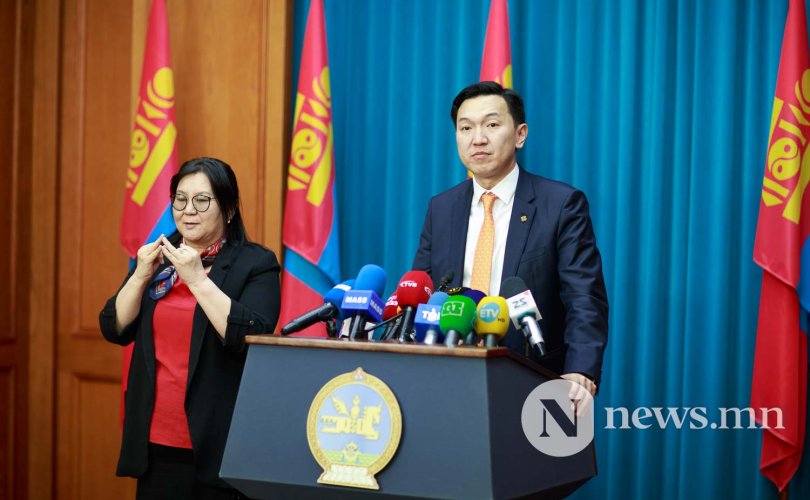
Uchral Nyam-Osor: Economic Immunity Must Be Outcome of Long-Term Intelligent Policy www.montsame.mn
Ahead of the Mongolia Economic Forum, “MEF Youth 2025” event was held on July 6, 2025.
This event, under the motto “Rebuilding Trust” was an open discussion on current economic challenges, future opportunities, and the participation of youth, gathering together more than 3,000 youth and sector experts.
Deputy Prime Minister and Minister of Economy and Development Uchral Nyam-Osor attended the event and addressed the youth, noting, "Economic immunity cannot be attained through short-term measures, but must instead be the outcome of long-term intelligent policy. Currently, the K-pop industry of the Republic of Korea contributes USD 50 billion to its national economy. A single concert by the group BTS generates USD 900 million in revenue, which is equivalent to 4–5 percent of Mongolia’s GDP. In 2025, the Los Angeles Lakers team was sold for USD 10 billion—an amount equal to approximately 45–50 percent of Mongolia’s GDP. In the same way, the talents and aspirations of Mongolian youth can be transformed into valuable contributions to the economy.”
The Ministry of Economy and Development is implementing a consistent policy aimed at supporting sectors driven by youth skills and innovation. This includes culture and the arts, sports, technology, agriculture, creative industries, the digital economy, and startups. Furthermore, the Government is undertaking reforms to eliminate barriers and restrictions in the form of “permission” faced by entrepreneurs, and create opportunities to compete in the international market, underscored the Deputy Minister.
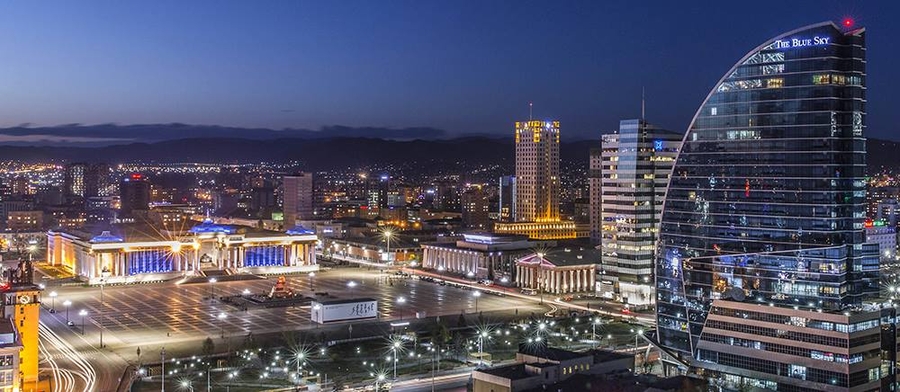
Mongolia Hosts Asia-Pacific Air Transport Facilitation Forum www.montsame.mn
The Government of Mongolia, in cooperation with the International Civil Aviation Organization (ICAO), is hosting the Asia-Pacific Air Transport Facilitation Forum for the first time.
This forum is notable for coinciding with the 75th anniversary of the adoption of Annex 9 to the Chicago Convention and the 100th anniversary of the development of civil aviation in Mongolia. More than 120 delegates from 39 countries are participating, discussing topics such as strengthening national air transport facilitation programs and committees, deepening border and customs control and regional cooperation, and implementing the Public Key Directory (PKD), passenger information systems (API, PNR), and the UN CT TRAVEL program, as well as the introduction of artificial intelligence, automation, and new border-crossing technologies to support a safe, efficient, and integrated air transport system. The event also aims to exchange information and experience, address challenges and solutions, and strengthen cooperation.
Director of the Monitoring, Evaluation, and Internal Audit Department of the Civil Aviation Authority of Mongolia S. Munkhnasan, stated, “Since 2021, our country has been operating a new international airport with the capacity of receiving up to three million passengers annually. In 2024, we served a total of 2.2 million passengers, while in the first six months of 2025, this figure has increased by 13 percent. According to international organizations, global air passenger flow is projected to increase by 86 percent by 2040. This forum focuses on how to meet and accommodate that growth. In recent years, international airports have introduced self-service registration as well as advanced technology equipment to conduct health screenings of passengers remotely. Behind these actions lies the aim of ensuring air transport safety. Our country is also working to facilitate air transport services, especially border and customs operations.”
During this forum, the countries are discussing cooperation to share information between relevant organizations more easily and rapidly., Regional Director for the Asia-Pacific Office of the International Civil Aviation Organization Ma Tao emphasized that facilitating air transport could prevent the production and illegal use of counterfeit passports, as well as human trafficking and migration-related issues.
The “Asia-Pacific Air Transport Facilitation” forum will continue until July 8 of this month.
...
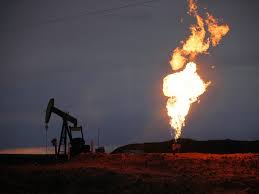
TMK Energy Signs Drilling Contract for LF-07 Production Well in Mongolia www.tipranks.com
TMK Energy Limited ( TMK) ) just unveiled an announcement.
TMK Energy Limited has signed a drilling contract with Major Drilling Group to drill the LF-07 production well at its Pilot Well Project in Mongolia. This marks a significant milestone for the company as it aims to enhance its gas production capabilities and gather valuable data for future exploration. The planned 2025 drilling program includes one additional pilot production well and up to five exploration wells, which will help TMK Energy meet its work program commitments and potentially increase its contingent resources.
More about TMK Energy Limited
TMK Energy Limited is an energy company focused on the exploration and development of coal seam gas projects. The company’s primary operations are centered around the Gurvantes XXXV Coal Seam Gas Project in Mongolia, where it aims to establish commercial gas flows from its pilot well projects.
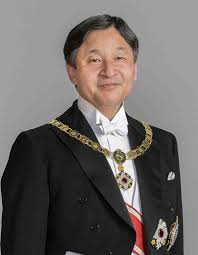
Japan Emperor, Empress Arrive in Mongolia www.nippon.com
Japanese Emperor Naruhito and Empress Masako on Sunday arrived in Mongolia for a weeklong official visit as state guests.
They became the first reigning Emperor and Empress to visit Mongolia. The Emperor visited the country in 2007 when he was Crown Prince.
A Japanese government plane carrying the Imperial couple left Tokyo's Haneda Airport earlier in the day and arrived at Chinggis Khaan International Airport near the Mongolian capital of Ulaanbaatar after a flight of about five hours.
Ahead of their departure, the Emperor and Empress greeted Crown Prince Akishino, Crown Princess Kiko and others who were at the Tokyo airport to see the Imperial couple off.
At the Mongolian airport, as the Emperor and Empress stepped off the ramp of the plane, women in traditional costume offered "aaruul," a traditional Mongolian snack made from milk, for them to taste. After also receiving bouquets of red flowers, the Imperial couple shook hands with Mongolian Foreign Minister Batmunkh Battsetseg, who was there to welcome them, and then proceeded down a red carpet, lined on both sides by honor guards, before getting into a car.
[Copyright The Jiji Press, Ltd.]
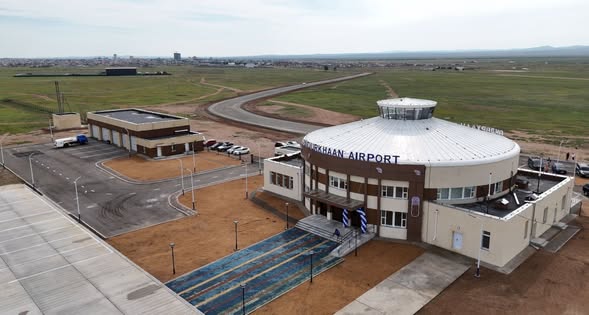
KFAED supports Mongolia airport expansion www.kuwaittimes.com
The Kuwait Fund for Arab Economic Development (KFAED) has contributed to the development and expansion of Undurkhaan Airport in Mongolia, marking a new milestone in the growing partnership between Kuwait and Mongolia. In a statement issued Friday, KFAED Acting Director General Waleed Al-Bahar said the project was financed through a grant previously extended by the Government of Kuwait to Mongolia under the Fund’s supervision, valued at KD 1.06 million (approximately $3.4 million).
Al-Bahar noted that the Fund also signed an additional grant agreement worth KD 80,000 (approximately $262,000) with the Mongolian government to finance the technical and economic feasibility study for the project. The objective, he said, is to transform the airport into a Category 4C international facility that would serve as a catalyst for economic growth and align with Mongolia’s Vision 2050 sustainable development strategy. “The airport expansion project is expected to become a critical transport hub, facilitating mobility, boosting trade, and unlocking new economic opportunities for the region,” Al-Bahar stated. “It will contribute significantly to long-term development and prosperity in Mongolia.”
The opening ceremony was attended by Mongolia’s Minister of Roads and Transport Delgier Saikhan, Kuwait’s Ambassador to Mongolia Mutlaq Al-Thuwaimer, and several senior Mongolian officials. To date, KFAED has provided Mongolia with soft loans totaling KD 23.7 million (approximately $77.6 million), in addition to technical assistance worth KD 519,000 (approximately $1.7 million), reaffirming Kuwait’s commitment to supporting sustainable development across Asia. — KUNA
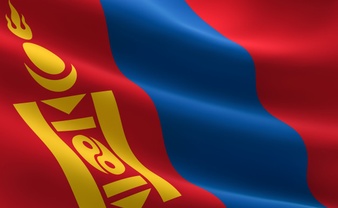
Diplomatic ties established with all UN Member States www.ubpost.mn
Mongolia has officially completed its long-term foreign policy goal of establishing diplomatic relations with all 192 member states of the United Nations, marking a historic milestone in the country’s diplomatic history.
The announcement follows the parliament’s approval on July 4 of four resolutions on the establishment of diplomatic relations with the Kingdom of Eswatini, Barbados, the Republic of Trinidad and Tobago, and the Republic of Botswana, the final group of UN member states with which Mongolia had yet to formalize diplomatic ties.
This achievement stems from a 2013 decision by the Standing Committee on Security and Foreign Policy to pursue diplomatic relations with all UN members, aligning with Mongolia’s National Security Concept and Foreign Policy Concept. The move underscores Mongolia's commitment to a peace-loving, open, independent, and multi-pillar foreign policy.
At a plenary session of the parliament on July 4, Foreign Minister B.Battsetseg introduced the resolutions, noting that the final step in a multi-year diplomatic effort had been reached. Between 2013 and 2018, Mongolia successfully established relations with 25 states. More recently, Joint Agreements were signed with Eswatini in 2018, Barbados in 2019, Trinidad and Tobago in 2021, and Botswana in 2023. These agreements were backed by relevant discussions at the Standing Committee on July 1, where the majority of members supported the resolutions.
B.Battsetseg emphasized that Mongolia’s expanded diplomatic footprint provides new opportunities to advance shared interests through multilateral platforms such as the United Nations and the World Trade Organization (WTO). It also enhances Mongolia’s global voice on key issues such as the rights of landlocked developing countries, climate action, and sustainable development.
During the parliamentary session, MPs reflected on the significance of partnerships with small yet globally engaged states like Barbados, a Caribbean island with a strong tourism economy and vibrant international role. MP G.Luvsanjamts highlighted Barbados’s impressive GDP, tourism development, and policy success, suggesting Mongolia could learn from its experience.
For Eswatini, Trinidad and Tobago, and Botswana, lawmakers and officials noted shared priorities in trade, landlocked development challenges, natural resource management, and regional stability. These new partnerships also support Mongolia’s aim to diversify foreign relations geographically and economically.
It was reported that Mongolia is now among a select number of countries that have established diplomatic relations with every UN member state, a significant diplomatic feat. The minister concluded that the achievement represents not just a diplomatic accomplishment, but a testament to Mongolia’s proactive role in the international community and its ability to maintain balanced and cooperative relations across diverse regions. This diplomatic milestone is expected to lead to broader collaboration in trade, tourism, environmental protection, and multilateral diplomacy. Officials indicated that talks on cooperation frameworks, including information exchange and policy coordination, are already underway with the newly partnered states.
- «
- 1
- 2
- 3
- 4
- 5
- 6
- 7
- 8
- 9
- 10
- 11
- 12
- 13
- 14
- 15
- 16
- 17
- 18
- 19
- 20
- 21
- 22
- 23
- 24
- 25
- 26
- 27
- 28
- 29
- 30
- 31
- 32
- 33
- 34
- 35
- 36
- 37
- 38
- 39
- 40
- 41
- 42
- 43
- 44
- 45
- 46
- 47
- 48
- 49
- 50
- 51
- 52
- 53
- 54
- 55
- 56
- 57
- 58
- 59
- 60
- 61
- 62
- 63
- 64
- 65
- 66
- 67
- 68
- 69
- 70
- 71
- 72
- 73
- 74
- 75
- 76
- 77
- 78
- 79
- 80
- 81
- 82
- 83
- 84
- 85
- 86
- 87
- 88
- 89
- 90
- 91
- 92
- 93
- 94
- 95
- 96
- 97
- 98
- 99
- 100
- 101
- 102
- 103
- 104
- 105
- 106
- 107
- 108
- 109
- 110
- 111
- 112
- 113
- 114
- 115
- 116
- 117
- 118
- 119
- 120
- 121
- 122
- 123
- 124
- 125
- 126
- 127
- 128
- 129
- 130
- 131
- 132
- 133
- 134
- 135
- 136
- 137
- 138
- 139
- 140
- 141
- 142
- 143
- 144
- 145
- 146
- 147
- 148
- 149
- 150
- 151
- 152
- 153
- 154
- 155
- 156
- 157
- 158
- 159
- 160
- 161
- 162
- 163
- 164
- 165
- 166
- 167
- 168
- 169
- 170
- 171
- 172
- 173
- 174
- 175
- 176
- 177
- 178
- 179
- 180
- 181
- 182
- 183
- 184
- 185
- 186
- 187
- 188
- 189
- 190
- 191
- 192
- 193
- 194
- 195
- 196
- 197
- 198
- 199
- 200
- 201
- 202
- 203
- 204
- 205
- 206
- 207
- 208
- 209
- 210
- 211
- 212
- 213
- 214
- 215
- 216
- 217
- 218
- 219
- 220
- 221
- 222
- 223
- 224
- 225
- 226
- 227
- 228
- 229
- 230
- 231
- 232
- 233
- 234
- 235
- 236
- 237
- 238
- 239
- 240
- 241
- 242
- 243
- 244
- 245
- 246
- 247
- 248
- 249
- 250
- 251
- 252
- 253
- 254
- 255
- 256
- 257
- 258
- 259
- 260
- 261
- 262
- 263
- 264
- 265
- 266
- 267
- 268
- 269
- 270
- 271
- 272
- 273
- 274
- 275
- 276
- 277
- 278
- 279
- 280
- 281
- 282
- 283
- 284
- 285
- 286
- 287
- 288
- 289
- 290
- 291
- 292
- 293
- 294
- 295
- 296
- 297
- 298
- 299
- 300
- 301
- 302
- 303
- 304
- 305
- 306
- 307
- 308
- 309
- 310
- 311
- 312
- 313
- 314
- 315
- 316
- 317
- 318
- 319
- 320
- 321
- 322
- 323
- 324
- 325
- 326
- 327
- 328
- 329
- 330
- 331
- 332
- 333
- 334
- 335
- 336
- 337
- 338
- 339
- 340
- 341
- 342
- 343
- 344
- 345
- 346
- 347
- 348
- 349
- 350
- 351
- 352
- 353
- 354
- 355
- 356
- 357
- 358
- 359
- 360
- 361
- 362
- 363
- 364
- 365
- 366
- 367
- 368
- 369
- 370
- 371
- 372
- 373
- 374
- 375
- 376
- 377
- 378
- 379
- 380
- 381
- 382
- 383
- 384
- 385
- 386
- 387
- 388
- 389
- 390
- 391
- 392
- 393
- 394
- 395
- 396
- 397
- 398
- 399
- 400
- 401
- 402
- 403
- 404
- 405
- 406
- 407
- 408
- 409
- 410
- 411
- 412
- 413
- 414
- 415
- 416
- 417
- 418
- 419
- 420
- 421
- 422
- 423
- 424
- 425
- 426
- 427
- 428
- 429
- 430
- 431
- 432
- 433
- 434
- 435
- 436
- 437
- 438
- 439
- 440
- 441
- 442
- 443
- 444
- 445
- 446
- 447
- 448
- 449
- 450
- 451
- 452
- 453
- 454
- 455
- 456
- 457
- 458
- 459
- 460
- 461
- 462
- 463
- 464
- 465
- 466
- 467
- 468
- 469
- 470
- 471
- 472
- 473
- 474
- 475
- 476
- 477
- 478
- 479
- 480
- 481
- 482
- 483
- 484
- 485
- 486
- 487
- 488
- 489
- 490
- 491
- 492
- 493
- 494
- 495
- 496
- 497
- 498
- 499
- 500
- 501
- 502
- 503
- 504
- 505
- 506
- 507
- 508
- 509
- 510
- 511
- 512
- 513
- 514
- 515
- 516
- 517
- 518
- 519
- 520
- 521
- 522
- 523
- 524
- 525
- 526
- 527
- 528
- 529
- 530
- 531
- 532
- 533
- 534
- 535
- 536
- 537
- 538
- 539
- 540
- 541
- 542
- 543
- 544
- 545
- 546
- 547
- 548
- 549
- 550
- 551
- 552
- 553
- 554
- 555
- 556
- 557
- 558
- 559
- 560
- 561
- 562
- 563
- 564
- 565
- 566
- 567
- 568
- 569
- 570
- 571
- 572
- 573
- 574
- 575
- 576
- 577
- 578
- 579
- 580
- 581
- 582
- 583
- 584
- 585
- 586
- 587
- 588
- 589
- 590
- 591
- 592
- 593
- 594
- 595
- 596
- 597
- 598
- 599
- 600
- 601
- 602
- 603
- 604
- 605
- 606
- 607
- 608
- 609
- 610
- 611
- 612
- 613
- 614
- 615
- 616
- 617
- 618
- 619
- 620
- 621
- 622
- 623
- 624
- 625
- 626
- 627
- 628
- 629
- 630
- 631
- 632
- 633
- 634
- 635
- 636
- 637
- 638
- 639
- 640
- 641
- 642
- 643
- 644
- 645
- 646
- 647
- 648
- 649
- 650
- 651
- 652
- 653
- 654
- 655
- 656
- 657
- 658
- 659
- 660
- 661
- 662
- 663
- 664
- 665
- 666
- 667
- 668
- 669
- 670
- 671
- 672
- 673
- 674
- 675
- 676
- 677
- 678
- 679
- 680
- 681
- 682
- 683
- 684
- 685
- 686
- 687
- 688
- 689
- 690
- 691
- 692
- 693
- 694
- 695
- 696
- 697
- 698
- 699
- 700
- 701
- 702
- 703
- 704
- 705
- 706
- 707
- 708
- 709
- 710
- 711
- 712
- 713
- 714
- 715
- 716
- 717
- 718
- 719
- 720
- 721
- 722
- 723
- 724
- 725
- 726
- 727
- 728
- 729
- 730
- 731
- 732
- 733
- 734
- 735
- 736
- 737
- 738
- 739
- 740
- 741
- 742
- 743
- 744
- 745
- 746
- 747
- 748
- 749
- 750
- 751
- 752
- 753
- 754
- 755
- 756
- 757
- 758
- 759
- 760
- 761
- 762
- 763
- 764
- 765
- 766
- 767
- 768
- 769
- 770
- 771
- 772
- 773
- 774
- 775
- 776
- 777
- 778
- 779
- 780
- 781
- 782
- 783
- 784
- 785
- 786
- 787
- 788
- 789
- 790
- 791
- 792
- 793
- 794
- 795
- 796
- 797
- 798
- 799
- 800
- 801
- 802
- 803
- 804
- 805
- 806
- 807
- 808
- 809
- 810
- 811
- 812
- 813
- 814
- 815
- 816
- 817
- 818
- 819
- 820
- 821
- 822
- 823
- 824
- 825
- 826
- 827
- 828
- 829
- 830
- 831
- 832
- 833
- 834
- 835
- 836
- 837
- 838
- 839
- 840
- 841
- 842
- 843
- 844
- 845
- 846
- 847
- 848
- 849
- 850
- 851
- 852
- 853
- 854
- 855
- 856
- 857
- 858
- 859
- 860
- 861
- 862
- 863
- 864
- 865
- 866
- 867
- 868
- 869
- 870
- 871
- 872
- 873
- 874
- 875
- 876
- 877
- 878
- 879
- 880
- 881
- 882
- 883
- 884
- 885
- 886
- 887
- 888
- 889
- 890
- 891
- 892
- 893
- 894
- 895
- 896
- 897
- 898
- 899
- 900
- 901
- 902
- 903
- 904
- 905
- 906
- 907
- 908
- 909
- 910
- 911
- 912
- 913
- 914
- 915
- 916
- 917
- 918
- 919
- 920
- 921
- 922
- 923
- 924
- 925
- 926
- 927
- 928
- 929
- 930
- 931
- 932
- 933
- 934
- 935
- 936
- 937
- 938
- 939
- 940
- 941
- 942
- 943
- 944
- 945
- 946
- 947
- 948
- 949
- 950
- 951
- 952
- 953
- 954
- 955
- 956
- 957
- 958
- 959
- 960
- 961
- 962
- 963
- 964
- 965
- 966
- 967
- 968
- 969
- 970
- 971
- 972
- 973
- 974
- 975
- 976
- 977
- 978
- 979
- 980
- 981
- 982
- 983
- 984
- 985
- 986
- 987
- 988
- 989
- 990
- 991
- 992
- 993
- 994
- 995
- 996
- 997
- 998
- 999
- 1000
- 1001
- 1002
- 1003
- 1004
- 1005
- 1006
- 1007
- 1008
- 1009
- 1010
- 1011
- 1012
- 1013
- 1014
- 1015
- 1016
- 1017
- 1018
- 1019
- 1020
- 1021
- 1022
- 1023
- 1024
- 1025
- 1026
- 1027
- 1028
- 1029
- 1030
- 1031
- 1032
- 1033
- 1034
- 1035
- 1036
- 1037
- 1038
- 1039
- 1040
- 1041
- 1042
- 1043
- 1044
- 1045
- 1046
- 1047
- 1048
- 1049
- 1050
- 1051
- 1052
- 1053
- 1054
- 1055
- 1056
- 1057
- 1058
- 1059
- 1060
- 1061
- 1062
- 1063
- 1064
- 1065
- 1066
- 1067
- 1068
- 1069
- 1070
- 1071
- 1072
- 1073
- 1074
- 1075
- 1076
- 1077
- 1078
- 1079
- 1080
- 1081
- 1082
- 1083
- 1084
- 1085
- 1086
- 1087
- 1088
- 1089
- 1090
- 1091
- 1092
- 1093
- 1094
- 1095
- 1096
- 1097
- 1098
- 1099
- 1100
- 1101
- 1102
- 1103
- 1104
- 1105
- 1106
- 1107
- 1108
- 1109
- 1110
- 1111
- 1112
- 1113
- 1114
- 1115
- 1116
- 1117
- 1118
- 1119
- 1120
- 1121
- 1122
- 1123
- 1124
- 1125
- 1126
- 1127
- 1128
- 1129
- 1130
- 1131
- 1132
- 1133
- 1134
- 1135
- 1136
- 1137
- 1138
- 1139
- 1140
- 1141
- 1142
- 1143
- 1144
- 1145
- 1146
- 1147
- 1148
- 1149
- 1150
- 1151
- 1152
- 1153
- 1154
- 1155
- 1156
- 1157
- 1158
- 1159
- 1160
- 1161
- 1162
- 1163
- 1164
- 1165
- 1166
- 1167
- 1168
- 1169
- 1170
- 1171
- 1172
- 1173
- 1174
- 1175
- 1176
- 1177
- 1178
- 1179
- 1180
- 1181
- 1182
- 1183
- 1184
- 1185
- 1186
- 1187
- 1188
- 1189
- 1190
- 1191
- 1192
- 1193
- 1194
- 1195
- 1196
- 1197
- 1198
- 1199
- 1200
- 1201
- 1202
- 1203
- 1204
- 1205
- 1206
- 1207
- 1208
- 1209
- 1210
- 1211
- 1212
- 1213
- 1214
- 1215
- 1216
- 1217
- 1218
- 1219
- 1220
- 1221
- 1222
- 1223
- 1224
- 1225
- 1226
- 1227
- 1228
- 1229
- 1230
- 1231
- 1232
- 1233
- 1234
- 1235
- 1236
- 1237
- 1238
- 1239
- 1240
- 1241
- 1242
- 1243
- 1244
- 1245
- 1246
- 1247
- 1248
- 1249
- 1250
- 1251
- 1252
- 1253
- 1254
- 1255
- 1256
- 1257
- 1258
- 1259
- 1260
- 1261
- 1262
- 1263
- 1264
- 1265
- 1266
- 1267
- 1268
- 1269
- 1270
- 1271
- 1272
- 1273
- 1274
- 1275
- 1276
- 1277
- 1278
- 1279
- 1280
- 1281
- 1282
- 1283
- 1284
- 1285
- 1286
- 1287
- 1288
- 1289
- 1290
- 1291
- 1292
- 1293
- 1294
- 1295
- 1296
- 1297
- 1298
- 1299
- 1300
- 1301
- 1302
- 1303
- 1304
- 1305
- 1306
- 1307
- 1308
- 1309
- 1310
- 1311
- 1312
- 1313
- 1314
- 1315
- 1316
- 1317
- 1318
- 1319
- 1320
- 1321
- 1322
- 1323
- 1324
- 1325
- 1326
- 1327
- 1328
- 1329
- 1330
- 1331
- 1332
- 1333
- 1334
- 1335
- 1336
- 1337
- 1338
- 1339
- 1340
- 1341
- 1342
- 1343
- 1344
- 1345
- 1346
- 1347
- 1348
- 1349
- 1350
- 1351
- 1352
- 1353
- 1354
- 1355
- 1356
- 1357
- 1358
- 1359
- 1360
- 1361
- 1362
- 1363
- 1364
- 1365
- 1366
- 1367
- 1368
- 1369
- 1370
- 1371
- 1372
- 1373
- 1374
- 1375
- 1376
- 1377
- 1378
- 1379
- 1380
- 1381
- 1382
- 1383
- 1384
- 1385
- 1386
- 1387
- 1388
- 1389
- 1390
- 1391
- 1392
- 1393
- 1394
- 1395
- 1396
- 1397
- 1398
- 1399
- 1400
- 1401
- 1402
- 1403
- 1404
- 1405
- 1406
- 1407
- 1408
- 1409
- 1410
- 1411
- 1412
- 1413
- 1414
- 1415
- 1416
- 1417
- 1418
- 1419
- 1420
- 1421
- 1422
- 1423
- 1424
- 1425
- 1426
- 1427
- 1428
- 1429
- 1430
- 1431
- 1432
- 1433
- 1434
- 1435
- 1436
- 1437
- 1438
- 1439
- 1440
- 1441
- 1442
- 1443
- 1444
- 1445
- 1446
- 1447
- 1448
- 1449
- 1450
- 1451
- 1452
- 1453
- 1454
- 1455
- 1456
- 1457
- 1458
- 1459
- 1460
- 1461
- 1462
- 1463
- 1464
- 1465
- 1466
- 1467
- 1468
- 1469
- 1470
- 1471
- 1472
- 1473
- 1474
- 1475
- 1476
- 1477
- 1478
- 1479
- 1480
- 1481
- 1482
- 1483
- 1484
- 1485
- 1486
- 1487
- 1488
- 1489
- 1490
- 1491
- 1492
- 1493
- 1494
- 1495
- 1496
- 1497
- 1498
- 1499
- 1500
- 1501
- 1502
- 1503
- 1504
- 1505
- 1506
- 1507
- 1508
- 1509
- 1510
- 1511
- 1512
- 1513
- 1514
- 1515
- 1516
- 1517
- 1518
- 1519
- 1520
- 1521
- 1522
- 1523
- 1524
- 1525
- 1526
- 1527
- 1528
- 1529
- 1530
- 1531
- 1532
- 1533
- 1534
- 1535
- 1536
- 1537
- 1538
- 1539
- 1540
- 1541
- 1542
- 1543
- 1544
- 1545
- 1546
- 1547
- 1548
- 1549
- 1550
- 1551
- 1552
- 1553
- 1554
- 1555
- 1556
- 1557
- 1558
- 1559
- 1560
- 1561
- 1562
- 1563
- 1564
- 1565
- 1566
- 1567
- 1568
- 1569
- 1570
- 1571
- 1572
- 1573
- 1574
- 1575
- 1576
- 1577
- 1578
- 1579
- 1580
- 1581
- 1582
- 1583
- 1584
- 1585
- 1586
- 1587
- 1588
- 1589
- 1590
- 1591
- 1592
- 1593
- 1594
- 1595
- 1596
- 1597
- 1598
- 1599
- 1600
- 1601
- 1602
- 1603
- 1604
- 1605
- 1606
- 1607
- 1608
- 1609
- 1610
- 1611
- 1612
- 1613
- 1614
- 1615
- 1616
- 1617
- 1618
- 1619
- 1620
- 1621
- 1622
- 1623
- 1624
- 1625
- 1626
- 1627
- 1628
- 1629
- 1630
- 1631
- 1632
- 1633
- 1634
- 1635
- 1636
- 1637
- 1638
- 1639
- 1640
- 1641
- 1642
- 1643
- 1644
- 1645
- 1646
- 1647
- 1648
- 1649
- 1650
- 1651
- 1652
- 1653
- 1654
- 1655
- 1656
- 1657
- 1658
- 1659
- 1660
- 1661
- 1662
- 1663
- 1664
- 1665
- 1666
- 1667
- 1668
- 1669
- 1670
- 1671
- 1672
- 1673
- 1674
- 1675
- 1676
- 1677
- 1678
- 1679
- 1680
- 1681
- 1682
- 1683
- 1684
- 1685
- 1686
- 1687
- 1688
- 1689
- 1690
- 1691
- 1692
- 1693
- 1694
- »






